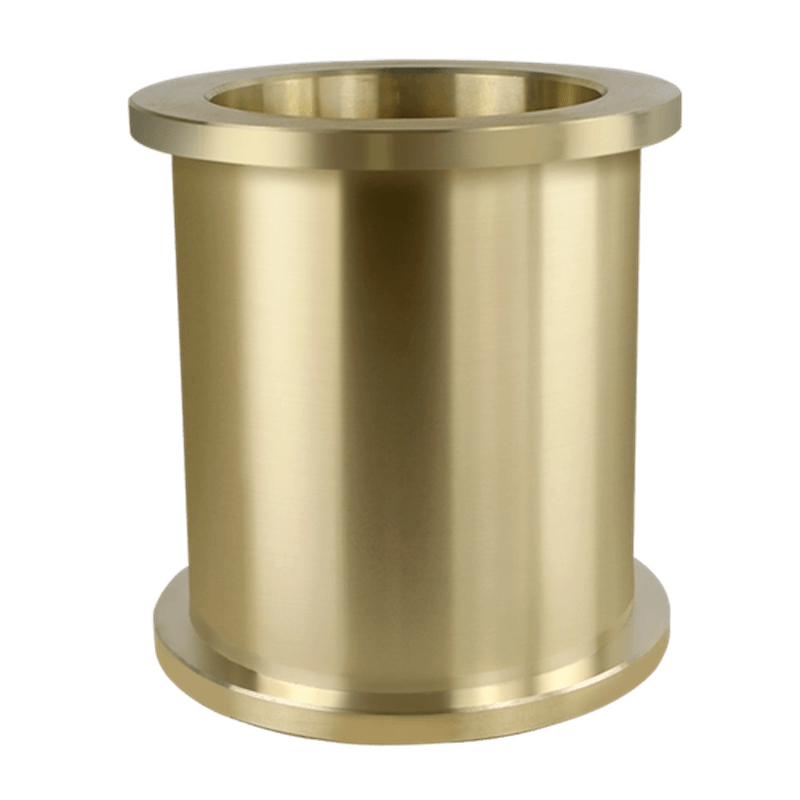
在重型機械領域中,選擇適當的齒輪材料對於確保最佳性能,壽命和可靠性至關重要。由於其出色的耐磨性和其他有益的特性,鋁製青銅已成為重型機械齒輪應用的流行選擇。本文深入研究了鋁製青銅齒輪的耐磨性特性及其在重型機械應用中的性能。
鋁製青銅齒輪簡介
鋁製青銅是一個銅基合金系列,其中含有鋁作為主要合金元素,通常是添加鐵,鎳和錳。這些合金以其:
- 高強度
- 優異的耐腐蝕性
- Superior wear resistance
- Good friction properties
- 導熱係數
These properties make aluminum bronze an attractive option for gears in heavy machinery, where components are subjected to high loads, harsh environments, and continuous operation.
Wear Resistance of Aluminum Bronze Gears
Wear resistance is a critical factor in gear performance, especially in heavy machinery where gear failure can lead to costly downtime and repairs. Aluminum bronze gears exhibit excellent wear resistance due to several factors:
1. Hardness and Strength
Aluminum bronze alloys used in gears typically have a Brinell hardness ranging from 150 to 280 HB, depending on the specific composition and heat treatment. This hardness, combined with high strength, contributes significantly to wear resistance.
2. Work Hardening
Aluminum bronze has the ability to work harden under load. This means that the surface of the gear teeth becomes harder with use, further enhancing wear resistance.
3. Lubrication Properties
Aluminum bronze has good oil retention properties, which helps maintain a lubricating film between mating gear surfaces, reducing friction and wear.
4.耐腐蝕
The excellent corrosion resistance of aluminum bronze helps prevent surface degradation that could lead to accelerated wear.
Comparative Wear Resistance Analysis
To better understand the wear resistance of aluminum bronze gears, let’s compare it with other common gear materials:
| 材料 | Relative Wear Resistance | 硬度(HB) | 耐腐蝕性能 |
|---|---|---|---|
| 鋁青銅 | 優秀的 | 150-280 | 優秀的 |
| Steel (4140) | 好的 | 190-330 | 貧窮的 |
| 不銹鋼 | 好的 | 160-190 | 非常好 |
| Bronze (SAE 660) | 緩和 | 60-90 | 好的 |
| Cast Iron | 好的 | 150-300 | 貧窮的 |
如表所示,鋁製青銅提供了耐磨性,硬度和耐腐蝕性的令人信服的組合,使其非常適合重型機械應用。
影響重型機械耐磨性的因素
有幾個因素影響重型機械中鋁製青銅齒輪的耐磨性:
- 載入:較高的負載可以加速磨損,但是鋁製青銅的工作硬化特性有助於減輕這種效果。
- 速度:齒輪速度會影響潤滑方案和熱量產生,從而影響磨損率。
- 潤滑:適當的潤滑對於最大化耐磨性至關重要。
- 環境條件:暴露於腐蝕性環境或磨料顆粒會影響磨損率。
- 表面處理:平滑的表面飾面可以通過減少摩擦和應力濃度來提高耐磨損性。
案例研究:重型機械中的鋁製青銅齒輪
為了說明在現實世界應用中鋁製青銅齒輪的性能,請考慮以下案例研究:
1。採礦設備
在一個大型開放坑礦中,將鋁製青銅齒輪安裝在重型輸送機中。在連續運行18個月後,與先前使用的鋼齒輪相比,齒輪的磨損很小,通常需要每12個月更換一次。
2。海洋推進系統
A shipyard replaced steel gears with aluminum bronze gears in the reduction gearbox of a large cargo ship. Over a 5-year period, the aluminum bronze gears exhibited 40% less wear than the steel gears, resulting in reduced maintenance costs and improved reliability.
Optimizing Aluminum Bronze Gear Performance
To maximize the wear resistance and overall performance of aluminum bronze gears in heavy machinery:
- Proper Material Selection: Choose the appropriate aluminum bronze alloy based on the specific application requirements.
- 熱處理: Optimize heat treatment processes to achieve the desired hardness and microstructure.
- Surface Engineering: Consider surface treatments or coatings to further enhance wear resistance.
- Lubrication Management: Implement a robust lubrication system and maintenance schedule.
- 定期檢查:進行定期檢查,以主動監控磨損和解決問題。
結論
鋁製青銅齒輪在重型機械應用中具有出色的耐磨性,表現優於許多傳統齒輪材料。它們的硬度,工作硬化能力和耐腐蝕性的獨特結合使它們成為苛刻環境的絕佳選擇。
雖然鋁製青銅齒輪的初始成本可能高於某些替代品,但由於維護和替換頻率的降低,它們的優勢耐磨性通常會導致長期成本較低。隨著重型機械的不斷發展,需要不斷增長的性能和可靠性,鋁製銅製齒輪可能在確保高效且耐用的操作中起著越來越重要的作用。
在考慮重型機械的齒輪材料時,工程師和設計師應仔細評估特定的應用要求,並將鋁製青銅作為高性能選擇。它經過證明的耐磨性和其他有益的特性使其成為追求改善機械性能和壽命的寶貴材料。
